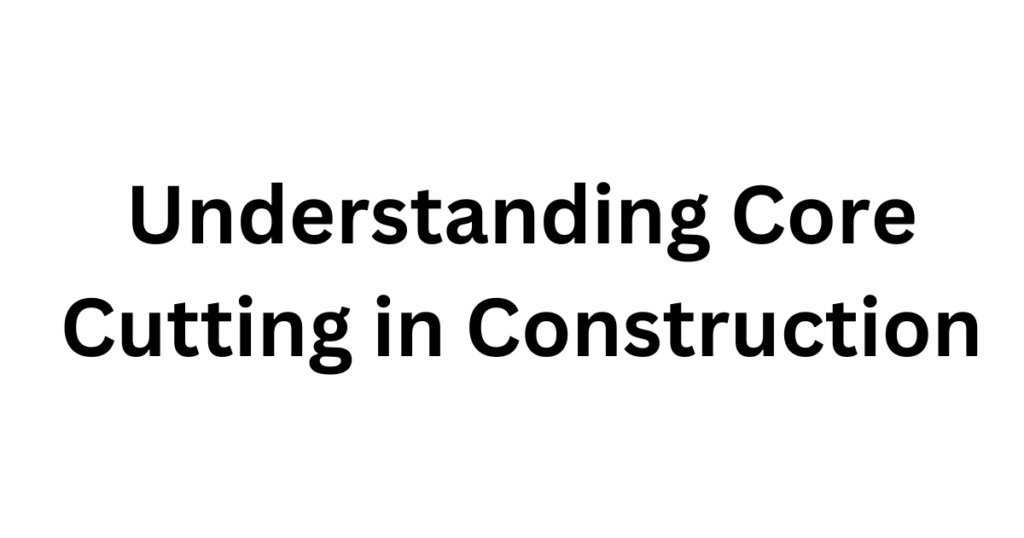Core cutting is a crucial technique in the construction industry, often used for various purposes like structural analysis, repairs, and renovations. It involves the removal of cylindrical samples (cores) from concrete, masonry, or other construction materials to assess their quality, strength, or to create openings for utilities like plumbing or electrical work. In this article, we’ll delve into the essentials of core cutting in construction, exploring its methods, applications, and benefits.
What is Core Cutting?
Core cutting, also known as concrete coring or core drilling, is the process of extracting a cylindrical sample, or “core,” from a larger structure, typically made of concrete, masonry, or other similar materials. This core sample can be used for a variety of purposes, including quality assessment, strength testing, and creating openings for pipes, wires, or ventilation ducts.
Methods of Core Cutting
- Diamond Core Drilling: This is the most common and widely used method for core cutting. It involves using a drill bit with industrial-grade diamonds embedded on its surface to cut through the material. Diamond core drilling is precise and produces clean, accurate holes.
- Percussion Core Drilling: In this method, a rotary hammer or drill is used to chip away at the material in a percussion motion until a core is obtained. This technique is less precise than diamond core drilling and is typically used for softer materials.
Applications of Core Cutting
- Structural Analysis: Core cutting is often employed to assess the integrity and strength of existing structures. Engineers and contractors take core samples to determine the concrete’s composition, density, and strength, ensuring the building meets safety standards.
- Renovations and Repairs: When renovating or repairing a building, core cutting is used to create openings for new plumbing, electrical systems, or HVAC ducts. It allows for the installation of these utilities without compromising the structural integrity of the building.
- Material Testing: Core samples are collected for laboratory testing to assess the material’s quality and composition. This information helps ensure that the construction material meets project specifications and requirements.
- Non-Destructive Testing: Core cutting can be used for non-destructive testing (NDT) to assess the condition of existing structures without causing significant damage. NDT helps identify potential issues early and allows for preventive maintenance.
Benefits of Core Cutting
- Precision: Diamond core drilling provides highly precise and clean cuts, minimizing damage to surrounding structures.
- Minimal Disruption: Core cutting causes minimal disruption to ongoing construction work or daily activities in the building.
- Safety: By assessing the quality and strength of construction materials through core cutting, safety hazards can be identified and addressed promptly.
- Cost-Effective: Core cutting is a cost-effective method for obtaining samples and conducting structural assessments compared to complete demolition and reconstruction.
- Environmentally Friendly: Core cutting generates minimal waste and dust, making it an environmentally friendly choice for construction and renovation projects.
Conclusion
Core cutting is a versatile and essential technique in the construction industry. It plays a vital role in ensuring the safety and quality of buildings, as well as facilitating renovations and repairs. With methods like diamond core drilling and percussion core drilling, it offers precision, minimal disruption, and cost-effective solutions for various construction needs. Whether you’re a contractor, engineer, or homeowner, understanding the basics of core cutting can help you make informed decisions and ensure the success of your construction projects.
